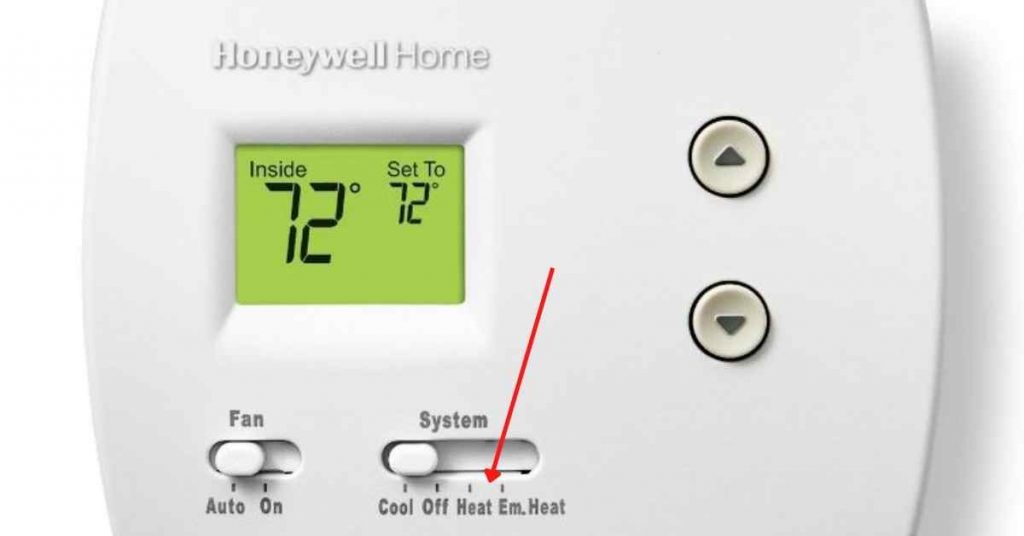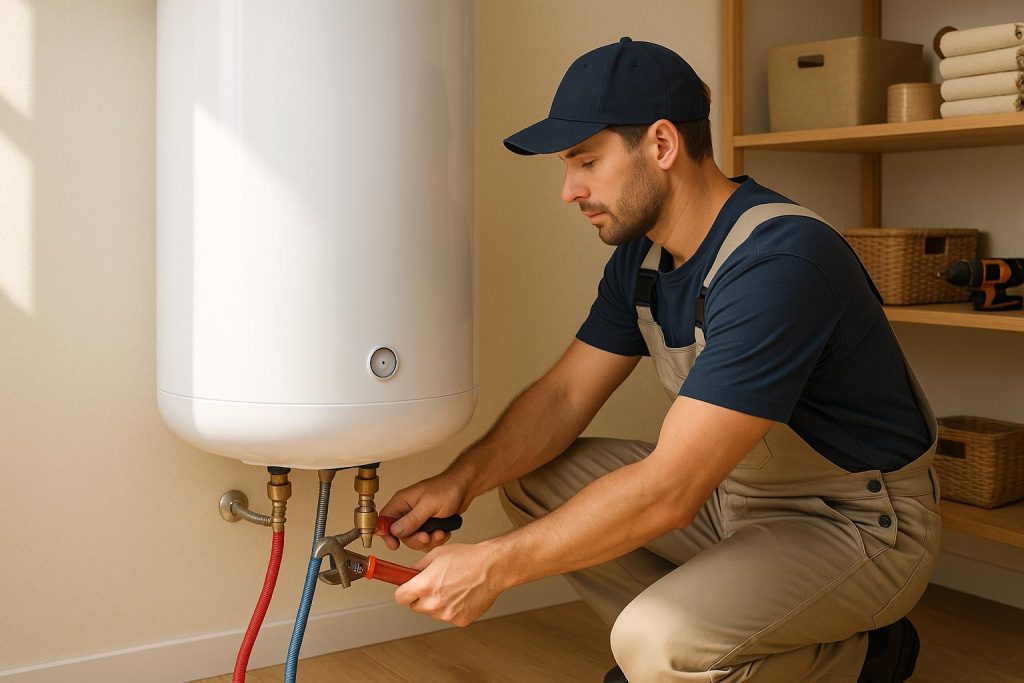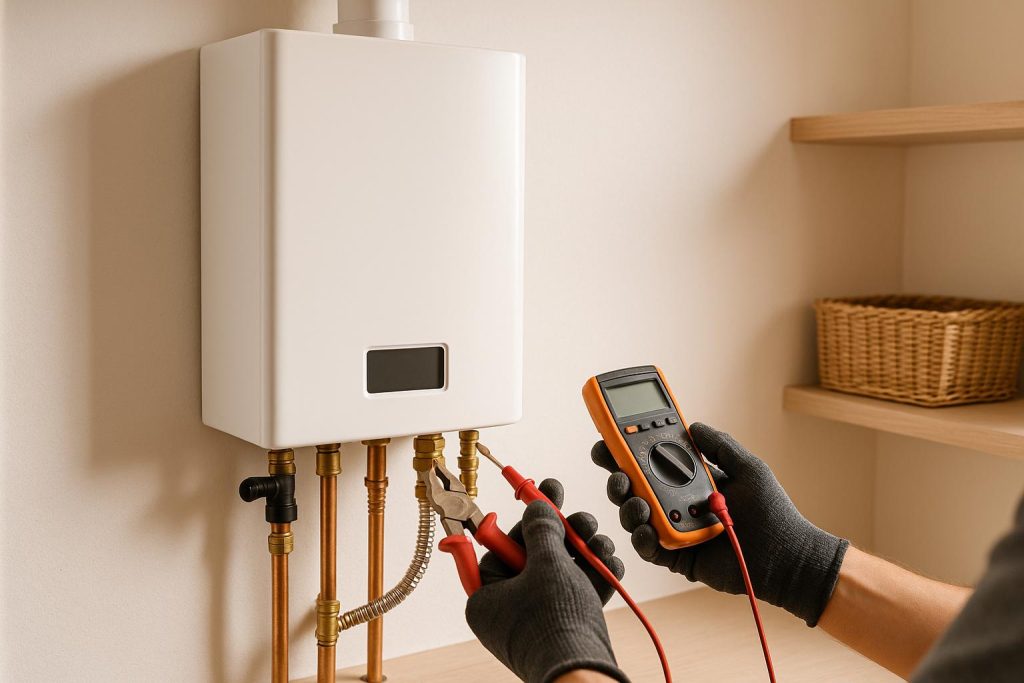
Heat pumps are energy-efficient heating and cooling systems that work well in a wide range of temperatures. However, their effectiveness can vary depending on the specific type of heat pump and outdoor conditions. Here’s a summary of when heat pumps may become less effective:
- Moderate Climates: Heat pumps are most efficient and effective in moderate climates where temperatures typically stay above freezing. They can effectively provide both heating and cooling throughout the year in regions with mild winters and summers.
- Cold Weather: As outdoor temperatures drop below freezing, the efficiency of an air-source heat pump (the most common type) decreases. The heat pump has to work harder to extract heat from the colder air, which can reduce its heating capacity.
- Auxiliary Heat: In colder conditions, heat pumps may rely on auxiliary heating elements or backup systems to meet heating demands. These auxiliary heat sources, such as electric resistance heating or a gas furnace, are less energy-efficient than the heat pump itself but can provide supplemental heat when needed.
- Balance Point: The point at which a heat pump’s efficiency matches the energy required to heat a home is known as the “balance point.” Below this temperature, the heat pump becomes less efficient, and auxiliary heat sources may be needed to maintain indoor comfort.
- Geothermal Heat Pumps: Geothermal heat pumps, which use the consistent temperature of the earth for heat exchange, are less affected by outdoor temperature fluctuations and can operate efficiently in colder climates. They are a good option for areas with harsh winters.
- Regular Maintenance: Proper maintenance, including cleaning filters, checking refrigerant levels, and ensuring the system is in good working condition, can help improve the heat pump’s efficiency even in colder weather.
Related: Heat Pumps vs Air Conditioners
Heat pumps will even work at temperatures below 20 degrees (lower that freezing point/32 degrees). However, the primary heating source will not be enough to heat your house hence the secondary heat source will be activated to complement it.
At that temperature, the heat pump is not very energy-efficient. That means a high utility bill at the end of the month.
Heat pumps are usually a very good idea in areas that experience mild winters. In such areas, the heat pump will work seamlessly and hardly activating the secondary energy source, which is usually the least efficient one.
In areas that experience extreme winters, heat pumps are not a good idea. That is because immediately temperatures fall below 40 degrees, the heat pump will be forced to activate auxiliary heating which is very expensive.
There is usually no need to turn your heat pump off during cold weather. The auxiliary heat will provide heating until the temperature improves. Only turn on emergency heating when the heat pump has completely failed to heat.
How a Heat Pump Works

A heating pump looks like a central air conditioner in every way. It comprises of a compressor, condenser coil and an evaporator coil.
The 3 components are connected together using copper tubes. For cooling or heating to happen, a refrigerant needs to be circulated between these components.
A good refrigerant is one which turns from gas to liquid and back to gas again easily, which is usually due to a low boiling point. It also needs to have a high latent heat of vaporization.
When used for cooling, the refrigerant flows from the evaporator (inside the house) to the compressor then to the condenser coil and then back to the evaporator.
Inside the evaporator coil, the refrigerant is usually in its liquid state and hence very cold. It therefore absorbs heat from the warm indoor air, cooling it in the process.
After losing heat to the indoor air, the refrigerant vaporizes and flows out to the compressor. The compressor forms the outside unit together with the condenser coil.
In order to remove the heat absorbed by the refrigerant to the surrounding, we need to increase its temperature even further. In thermodynamics, heat is transferred from a point of high to low concentration.
When compressing the refrigerant, its pressure increases. An increase in pressure also translates in an increase in temperature.
The refrigerant therefore enters the condenser coil as a superheated gas. A fan blows colder air over the coil and that is how it releases heat to the surrounding.
When a heat pump is used for heating, the opposite happens. The refrigerant flows from the evaporator coil to the condenser coil and then to the compressor before flowing out back to the evaporator coil.
That is made possible by a device known as a reversing valve. As its name implies, the reversing valve reverses the direction of flow of the refrigerant.
As I mentioned, for heat transfer to take place there needs to be a temperature differential between the 2 surfaces. As such, by lowering the temperature of the refrigerant, we can extract heat from the surrounding even when it is evidently cold outside.
As the refrigerant moves from the evaporator coil to the condenser coil, it is passed through expansion valves where its temperatures is reduced way below the outside temperature.
Therefore, when the refrigerant enters the condenser coil, it will absorb heat from the surrounding and change from liquid to gas.
Note: When used for heating, a heat pump’s condenser coil functions like an evaporator coil while an evaporator coil works like a condenser coil.
From the condenser coil, the refrigerant gas enters the compressor. At the compressor, the refrigerant is compressed dramatically increasing its pressure and temperature as well.
The high-pressure superheated gas is then sent out to the evaporator coil inside the house. That is how the heat pump heats the house.
The cold indoor air absorbs heat from the refrigerant which is then supplied throughout the house. at the end, the refrigerant turns to liquid and is sent out to the condenser coil and the cycle goes on and on.
How a Heat Pump Stops Being Effective
When the temperature outside falls below 40 degrees, the air’s thermal energy reduces, and is therefore not sufficient to satisfy your heating needs.
By design, heat pumps come with a secondary heat source to complement the primary source of heat. That is usually in the form of electrical resistance heating.
In some cases, a heat pump’s secondary heat source could be a natural gas-powered furnace. Depending on where you live among other factors, sometimes it is cheaper to run a furnace than electrical resistance heating.
When your heat pump is unable to extract sufficient heat from the surrounding, your auxiliary heat kicks in. You can clearly see that on your thermostat.
The auxiliary heat stays on until such a time when the heat pump can extract 100% of the energy needed from the surrounding air.
If your auxiliary heat light is on despite the temperature outside being more than 40 degrees, there is definitely a problem with your heat pump.
Auxiliary Heat vs Emergency Heat

Most people with heat pumps often confuse auxiliary heat and emergency heat. Some even think that the two terms are interchangeable. So, what is the difference between the 2?
Auxiliary heat comes on when the indoor temperature falls suddenly by 3 degrees below the thermostat setting. It is usually a sign that the primary source of heat is not sufficient to heat the house hence it kicks in to complement it.
Auxiliary heating comes on automatically and stays on until temperatures increases. It also goes off automatically.
Emergency heating on the other side must be manually activated by yourself. There is a button on the thermostat for that.
As its name suggests emergency heating should only be used for emergencies. Such emergencies include when the heat pump has completely failed, frozen or when a tree branch has crashed on it.
When you turn on emergency heating, you are telling the system to bypass the heat pump and depend on the secondary heating source 100%. As such, running the heat pump on emergency heat is very expensive.
Conclusion
In summary, the efficiency of a heat pump declines when temperatures outside hit between 40 and 25 degrees Fahrenheit. At those temperatures, the heat pump cannot heat the house on its own prompting auxiliary heating to come on and supplement it.





